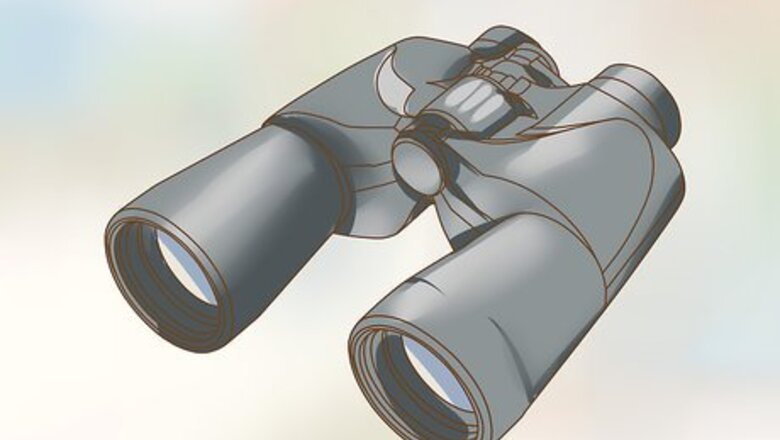
views
Gathering Equipment
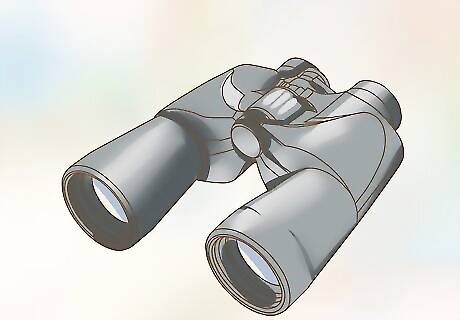
Look at binoculars you have on hand. You don’t need fancy birdwatching equipment to start watching birds. Anything that will help you see far away will work in the beginning. You very well may decide to buy binoculars especially for birding, but you can use opera glasses, telescopes or anything you have on hand. Ask a friend, who may have binoculars, if you can borrow them.

Compare binoculars for fit and feel. If you decide to buy, the way binoculars fit on your face and feel in your hands is important. Go to a sporting goods store or find a nature center that may have different pairs to try. Find a lightweight pair that will be easy to carry and hold steady while you spot birds.
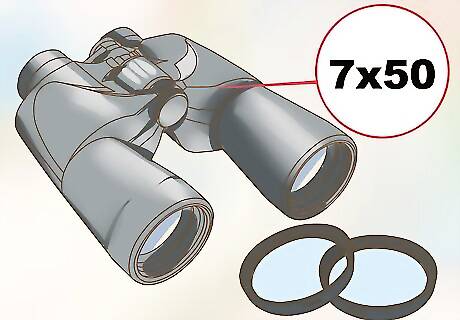
Look at the magnification and lens size. Binoculars will have two numbers that are listed like 8x29, 7x50, 10x40, or some other combination. The first is how many times they magnify an image and the second is the lens size, or how much light they bring in. Pick a lens on the low end, because a high one captures a lot of movement too and can be too bulky for watching birds in a forest or field. Pick a magnification of 7 to 8 times and a lens number between 30 and 40 millimeters for the most versatility. 7x35 and 8x42 are both good options for birdwatching.
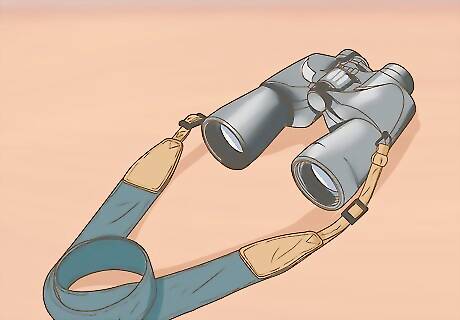
Consider the binocular strap. When you go into the field, you will be wearing binoculars on your neck for hours at a time, so make sure the strap is wide and comfortable. Use a harness that distributes weight to the shoulders and back, if you have a heavier pair.
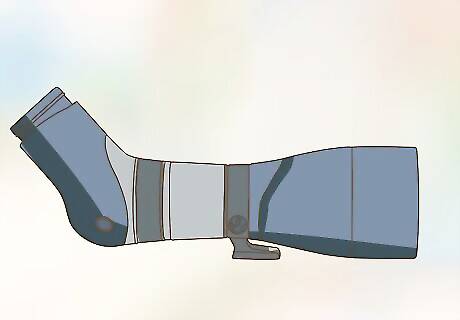
Use a spotting scope. A scope will offer stability, since it’s used on a monopod, and has higher magnification abilities. If you get serious about birding, invest in a scope to spot birds from greater distances, like across lakes or fields. Look for one with at least one lens that is fully coated with magnesium fluoride. This will give you the sharpest views of feathers and colors. It will also capture movement easier than binoculars.

Get a field guide. A regional field guide can help you narrow down what birds to look for locally. You can also download bird identification apps for your phone. Learn about different families of birds, like swallows, warblers, and herons. Get into the habit of studying their habits, calls, and field marks. Other than binoculars, your field guide will be your go-to for bird watching, because it will have all the information you need to identify different species.
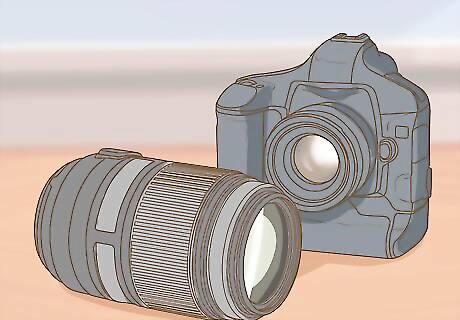
Find a good camera. Photographs will chronicle what birds you spot and - if you need the help - identify them later on. Find a quality camera to take bird pictures, since they are small and do not stay still. Look for a DSLR one with a lens attachment of at least 300 mm. If you cannot swallow the cost of a higher-end DSLR, find a camera with a super-zoom lens. Place it on a monopod, because images can get shaky the more you zoom in.
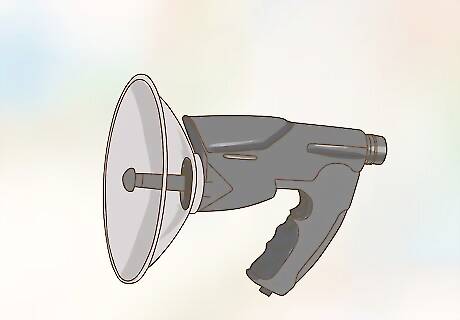
Bring microphones to record songs. Learning bird songs and calls are a helpful way to identify them. You may want to record their sounds while you're out spotting. Take either a parabolic microphone or a shotgun mic that you can attach to your camera. Use your camera to record. Regular microphones will be ineffective at recording soft or distant bird sounds and will capture too much background noise.
Preparing to Spot
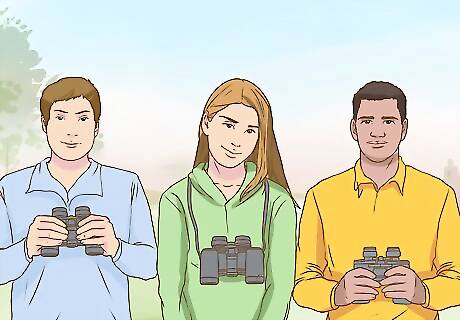
Find a birding group. What better way is there to learn about birding, than from other birders? Look at audubon.org or check with your local nature conservatory to find bird watching groups you can join. Also consider informal groups, like those you'd find through Meetup. The more sets of eyes and ears there are, the more birds you'll find, especially if you go with bird watchers who are more experienced than you are.

Dress appropriately. Going out into the field means you’re going into a lot of the same areas you’d be in if you were hiking. Stick with the same type of breathable, loose clothes and sturdy boots you’d wear for long treks through forests or fields. Wear waterproof boots, so you’ll be prepared if you encounter puddles or mud. Wear dark, neutral colors, like brown and gray, so you don’t frighten birds away. Bright or white colors enhance movement around them.
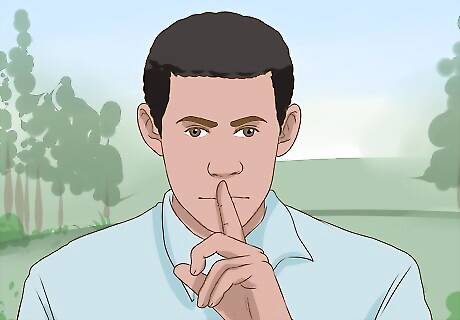
Be quiet. Loud talking or laughing can cause birds to flee before you even get close. Put your phone on silent, and speak softly or use hand signals and gestures to communicate with a group. Don’t be tempted to yell “Look over here!,” no matter how excited you get by spotting a rare bird. A whisper can often communicate the same thing. Avoid flash and camera noises.
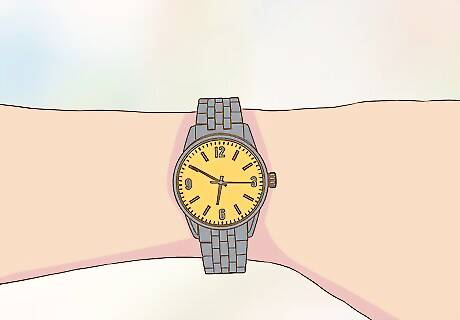
Go at the right time. Depending on where you’re located and what birds you’re trying to spot, the time of day you venture out can greatly impact successful birding. A lot of birds wake in the early morning hours when the sun first rises because they’ve been nesting all night and want breakfast. Others are not as dependent on the sun, especially if it’s summertime and the days are longer. Songbirds are normally spotted two hours after sunrise and right before sunset. Hawks and eagles are best seen when the sun first rises. Spot ducks any time of day. Shorebirds are out when ocean tides change.

Lure birds to you. If you don’t want to join a birding group or take long walks through potentially thorny forests, you can enjoy bird watching from your own backyard. Use bird feeders filled with food for species you’d like to see. Sit by a window and enjoy the scenery. Start with simple black oil sunflower seeds and diversify with things like mealworms and fruit. Place a birdbath or fountain in your yard. Birds love shallow or running water.
Identifying Birds

Find a bird with your own eyes first. No matter what type of binoculars you use, they will lessen your field of vision. Avoid missing birds by spotting them with your own eyes first. Find birds around trees and overhead in fields, and then use your binoculars to have a closer look.

Use your field guide. Your field guide is going to be increasingly important as you fine-tune your birding skills and encounter similar-looking birds. Compare markings and colors of birds with your guide. Learn about bird songs and calls as well. Other things to consider include: The shape and size of the bird, including whether it’s big, small, round or oval. What the bird is doing. Is it searching for insects, circling overhead or soaring? Places where field markings are normally, like wing bars or the tail feathers.
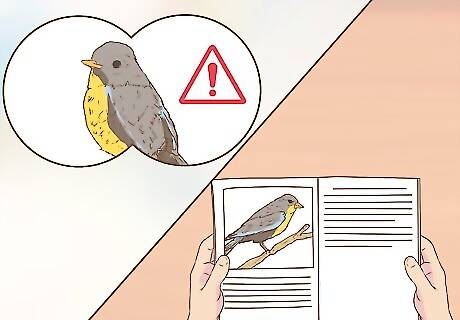
Don’t use colors alone. Focusing on bird colors can lead to misidentification. Light and shadow can make colors appear different than what they really are. A bright red feather can look brown in certain light. Focus instead on shape, size, markings, posture, behavior, etc.
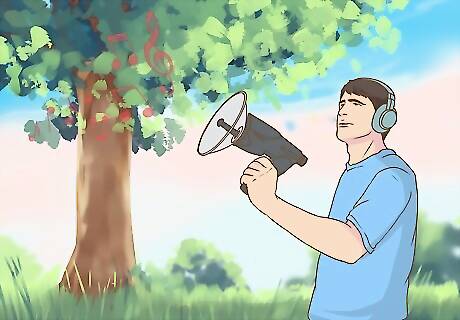
Listen to their songs. Sometimes the only way you can identify a bird is by their songs and calls because they are good at hiding. Listen to bird chirps to determine where they may be coming from. Keep in mind what birds you may see on an outing and look up their calls beforehand. Record sounds with a parabolic or shotgun microphone.

Look at the surrounding environment. You wouldn’t expect to see a heron in the desert. Moreover, you should expect to see different birds in a forest than you would see in the city park. There will also be different birds by oceans than by lakes. Always consider the known habitat of species you're looking for.
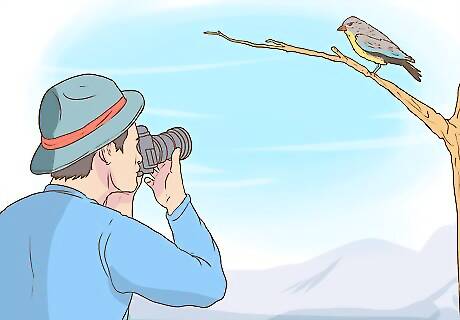
Take a picture. Use a camera, without a flash or clicks to prevent frightening birds, to look back on after an outing. This way, you can record what you’ve spotted, but also help identify birds later on, when you're not in the field. With time, you’ll become an expert and may only need the camera to record all the interesting birds you encounter.


















Comments
0 comment